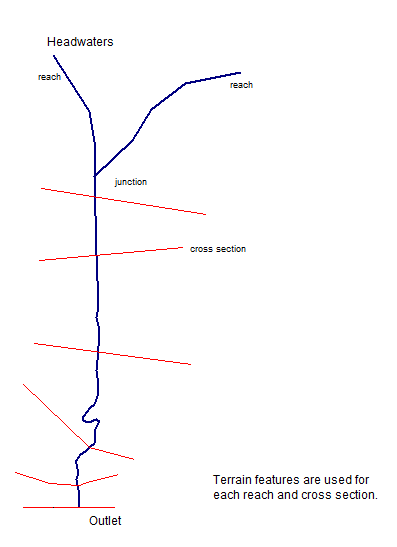

The list could of course go on and on, but let’s get started with the basics before we get too far ahead of ourselves!īefore we do anything else, let’s grab some tidal data to check the range of water surface elevations that we’ll be working with.
Merge two reaches hec ras free#
I’ve generally found that course attendees retain concepts best if they do something a bit different than the written example – customising the process rather than walking through the prescribed steps verbatim so if you’re following along with your own model, feel free to choose your own canal alignment. While the Southern route shown in green requires the least excavation, the red dashed alignment is the shortest path – following the historical Portage Road.įor this write-up I’ve selected the Portage Road alignment I’ll keep the Middle Earth theme going and call our ambitious new waterway project the Wilderland Canal: So back to the beginning, the images below show some prospective canal alignments that would sever Northland and half of the Auckland Region from the North Island.

Here’s a short clip of what we’ll be looking at by the time we finish this exercise: So let’s cast all of these issues aside for the moment and have some hypothetical fun with the idea in HEC-RAS!

You would also need quite a bit of dredging in the bays on either side of the canal to accommodate any significant ship traffic.īecause the tides on the west side of the island are out of phase with the tides to the east, the current through the canal would alternate directions, forming a tidal bore under some circumstances and potentially requiring locks to accommodate navigation. So it’s not quite as simple as it sounds but I’m always looking for cool case studies to use as course material. So why hasn’t anybody done it yet? Well, for one thing, it would be an ecological disaster (given the mixing of species that is an inherent and unfortunate by-product of many of the world’s canals). If you went and rented yourself a Bobcat, you could probably excavate the channel single-handedly in less time than some of us have spent working on the latest version of HEC-RAS. For this example (Workshop #6 from our New Zealand course), we’ll set up one of our tutorial models from scratch and create a new island that we’ll call “Middle Zealand!”Īs I was trying to navigate my way across New Zealand’s North Island a few months ago, I was surprised to find that the only thing keeping New Zealand’s two main islands from being three separate islands is a little 2 km stretch of land in Otahuhu just south of Auckland. If you were to excavate a canal across that narrow strip, it would connect Mangere Inlet on the west with Hauraki Gulf on the east, shaving 800 km off the sea voyage around Northland in the process: This article covers terrain modification in HEC-RAS and the introduction of tidal boundary conditions as stage hydrographs.


 0 kommentar(er)
0 kommentar(er)
